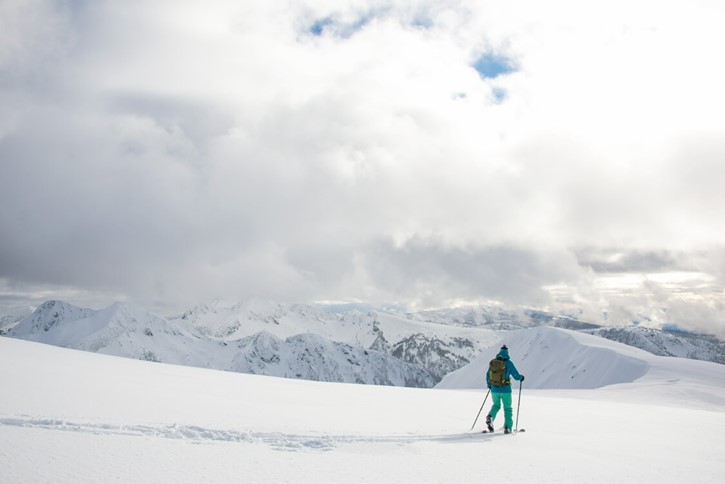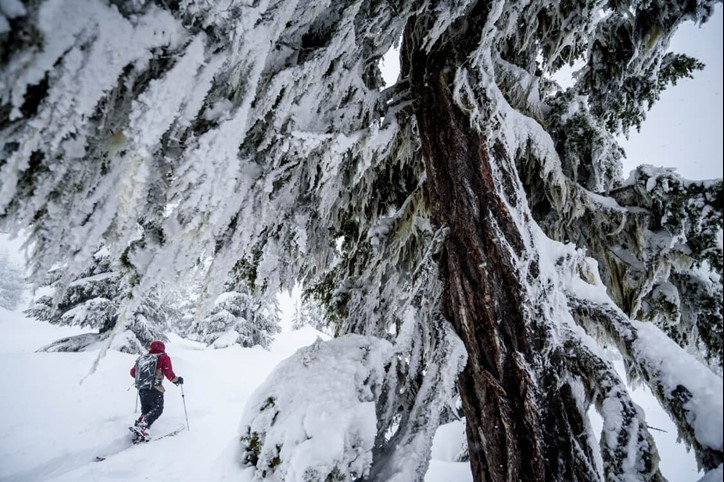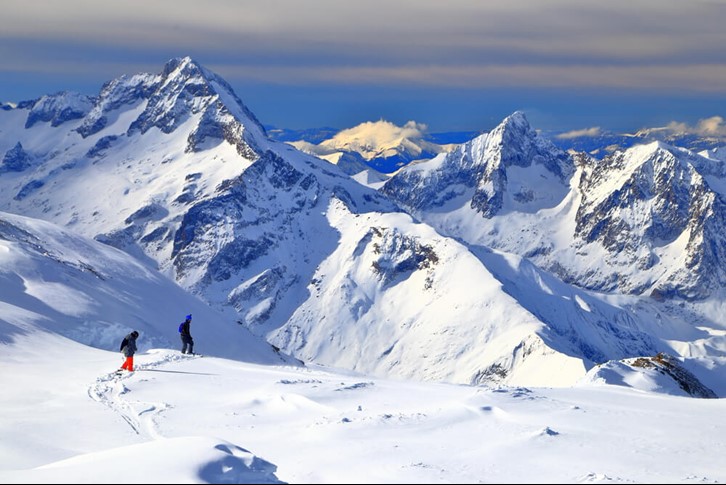
The backcountry has always had an irresistible appeal for thrill-seeking skiers — calling them to off-piste adventure and exploration.
The backcountry can be a skiing paradise, but it can also be dangerous. In recent years, the popularity of backcountry skiing has led to stories of missing skiers lost in avalanches.
If you want to experience backcountry skiing for yourself, it is important to be careful. Backcountry skiing can be incredibly rewarding, with perfect powder conditions and beautiful terrain to explore, but you need to be safe and plan ahead.
In this article, we’ll provide eager backcountry explorers with some quick tips for getting started with skiing off-piste. Please let us know if you have any comments or questions below!
1. Plan for Your Backcountry Trip

If you have a backcountry ski trip in mind, it’s important to plan out what you’re going to do. Research the area where you’re thinking of skiing and take into account the risks. Figure out where you’ll start and finish your run. Consider whether you will you be trekking in on skis or using a lift to access the terrain through an existing resort.
You should create a timetable for your trip and share your plan with someone outside your group, so they can alert emergency services if you don’t return when you’d planned. Make sure that you check weather reports regularly before your trip and be prudent — you should cancel your trip if a blizzard is anticipated.
2. Get the Right Gear
Equipping yourself with the proper gear is probably the most important aspect of backcountry skiing. There are a number of options for backcountry or alpine touring (AT) gear, so we recommend that you do some additional research, after reading this article.
Here are some of the most important pieces of gear that you’ll need to successfully conquer the backcountry this season:
AT Boots & Bindings
Alpine touring boots and binding are different than your typical ski gear. If you’re frequently skiing in the backcountry, you’ll want free-hinging binding that make skinning easier. You’ll also want lightweight boots designed for the labour of climbing uphill and cross-country.
Telemark skis and boots are another possible option, but they aren’t ideal if you’re encountering deep powder and steep vertical. AT boots and binding will allow you to adjust your settings once you’ve finished your trek in and lock your heels back into place for your descent.
Climbing Skins
Climbing skins are strips of material that can be attached to the base of your ski, using loops, hooks, or adhesive. They are designed to make it easier for skiers to ascend backcountry slopes in alpine touring or nordic skis.
When selecting skins, it’s important to make sure they are a proper fit for your skis. Poorly fitting skins can lead to slippage during your ascent, which can be both frustrating and exhausting.
Backcountry Skis
While it’s possible to take a regular ski and outfit it with alpine touring bindings for the backcountry, it’s generally recommended that you select skis designed specifically for this type of terrain.
Backcountry skis tend to be wider, providing additional float to help you deal with the extra powder that you’re likely to encounter. Some alpine touring skis will be more lightweight as well, to help make ascents more forgiving for the skier.
Alpine Survival Kit
Your final piece of gear will be your alpine survival kit and, while it may not seem essential to your skiing experience, you want to make sure you put it together carefully. There are many items to consider including in your kit, but we’d recommend starting with the following:
- A sturdy, waterproof backpack
- Spare clothes and gear
- Food and water
- A small first aid kit
- A shovel
- An avalanche probe
- A transceiver (attached to your body)
- An avalanche airbag
- A mobile phone or GPS device
3. Practice Proper Avalanche Safety
When heading into the backcountry, it’s very important to practice proper avalanche safety. The best way to do this is to take an accredited avalanche safety course that will help you understand how to deal with an avalanche situation and spot the dangers proactively.
Avalanches can be tricky to predict accurately. The best course of action is to always exercise caution. If there’s an avalanche risk in the local area, don’t take a chance and stay off the slopes. Keep yourself informed of the situation before your trip by listening to avalanche reports and other weather bulletins.
4. Never Go Into the Backcountry Alone

Our final recommendation for new backcountry skiers is a simple one: never ski alone. If you’re heading into the backcountry, you should always be skiing with a buddy or a group.
Make sure your group includes experienced skiers who can handle the terrain and are prepared for the excursion. Stick together during the trip, so you can help one another if something happens on the descent.
One of the best ways to experience the backcountry is to hire an experienced guide to help with your trip. Many tour operators will offer cat-skiing or heli-skiing services that provide easier access to backcountry terrain. If you’re looking to get started, this can be a great way to enjoy the backcountry — without the same burden of preparation.
This year, Skican is offering a special Introduction to Backcountry Skiing trip to Mount Assiniboine and the 90-year-old Assiniboine Lodge. This Ski Escape will be a great opportunity to experience backcountry skiing with some expert guides. We hope that you’ll join us!




